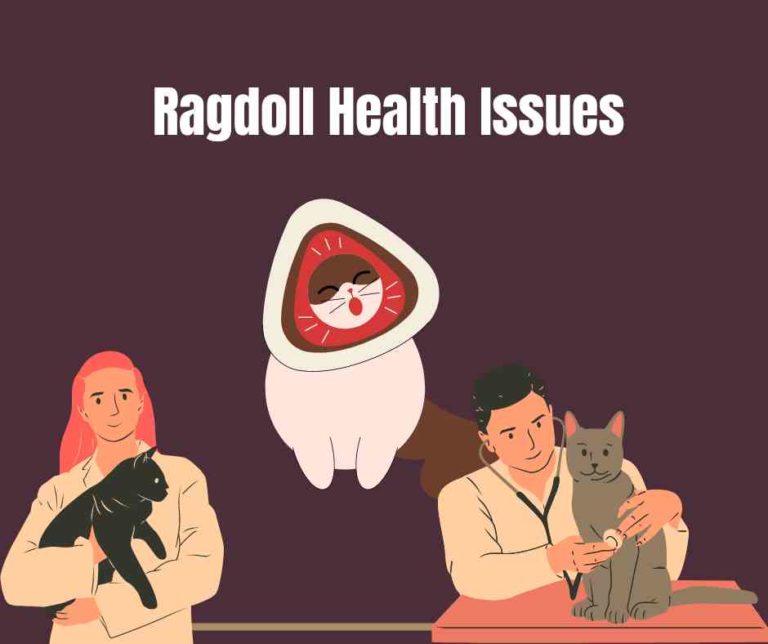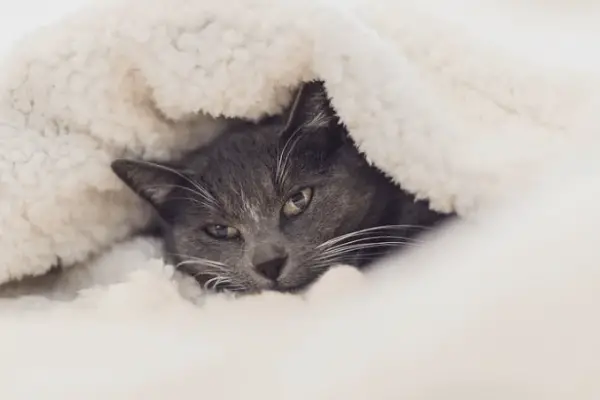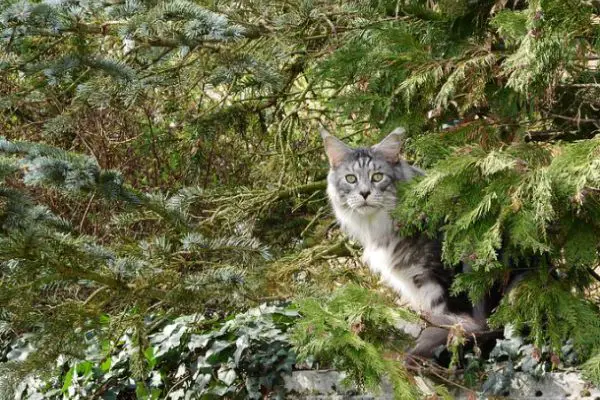How Big Do Bengal Cats Get [6 Growth Stages]
![How Big Do Bengal Cats Get [6 Growth Stages] How Big Do Bengal Cats Get](https://petcreeks.com/wp-content/uploads/2021/07/How-Big-Do-Bengal-Cats-Get.jpg)
I came across this question of how big do Bengal cats get, which is interesting because most Bengal cat owners don’t even know how big they get.
In this article, you will know the Bengal cat size chart at every stage, factors that might influence their growth and development, and what will be their final size.
Bengal cats are long and lean, with a body shape similar to a leopard’s. They are more slender than their average domestic cat counterparts.
Bengal cats have a broad chest and the hind legs are longer than the front. Bengals are known for their high intelligence, playfulness, and dog-like behavior.
They are among the most trainable breeds of cats and can be trained to walk on a leash and even do tricks.
What’s the size of a Bengal cat? It’s a common misconception that all Bengals are small.
The truth is, they come in a wide range of sizes. Their size ranges from that of a regular house cat to a large cat.
How Big Do Bengal Cats Get
On average, a healthy and properly fed Bengal cat should weigh between 8 and 15 pounds (3.63 and 6.80 kg), and a full-grown and well-nourished Bengal cat should stand between 14 and 18 inches (36 and 46 cm) tall in a pleasant cat environment.
Now that we’ve given you an outline of the weight and height, we’ll break it down for you.
The final size of a male Bengal cat is always better and bigger than that of a female Bengal cat, regardless of the feeding level.
The six growth stages in Bengal cats are:
- 8 weeks
- 3 months
- 6 months
- 9 months
- 1 year
- 2 years
At two years, all forms of growth, be it height or length, stops your Bengal cat can only add or reduce weight depending on what you feed your cat.
Average Height of a Bengal Cat
Here is the summary of the height of a male and female Bengal cat:
- A fully developed male Bengal cat should reach a height of 13 to 15 inches (33.03 to 38.1 cm) or more.
- A fully developed and healthy female Bengal cat should reach a height of 11 to 14 inches (30.48 to 35.56 cm) or more.
A Table of Bengal Height By Age
Here is the summary of a Bengal cat’s height for the corresponding age:
| Age | Height | Units |
| 8 weeks | 6 to 8 | Inches |
| 3 months | 7 to 9 | Inches |
| 6 months | 8 to 10 | Inches |
| 9 months | 10 to 12 | Inches |
| 1 year | 11 to 14 | Inches |
| 2 years | 13 to 15 | Inches |
Average Bengal Cat Weight
Here is the summary of the weight of a male and female Bengal cat:
- A healthy male Bengal cat should weigh between 8 and 15 pounds (3.63 and 6.80 kg) or more.
- A healthy and well-fed female Bengal cat should weigh between 8 and 13 pounds (3.63 and 5.90 kg) on average.
A Table of Bengal Cat Weight Chart By Age
Here is the summary of a Bengal cat’s weight for the corresponding age:
| Age | Weight | Units |
| 8 weeks | 2 to 4 | lbs |
| 3 months | 4 to 5 | lbs |
| 6 months | 6 to 12 | lbs |
| 9 months | 8 to 13 | lbs |
| 1 year | 10 to 14 | lbs |
| 2 years | 10 to 15 | lbs |
Average Bengal Cat Body Length
Here is the summary of the body length of a male and female Bengal cat:
- A fully developed male Bengal cat should reach a body length of 14 and 18 inches (36 and 46 cm) or more.
- A fully developed and healthy Bengal cat should reach a body length of 14 and 15 inches (36 and 38.1 cm) or more.
A Table of Bengal Cat Body Length By Age
| Age | Length | Units |
| 8 weeks | 7 to 9 | Inches |
| 3 months | 8 to 10 | Inches |
| 6 months | 10 to 12 | Inches |
| 9 months | 12 to 14 | Inches |
| 1 year | 14 to 16 | Inches |
| 2 years | 16 to 18 | Inches |
Factors that influence the growth of a Bengal cat
A Bengal cat’s growth is influenced by a variety of factors which are as follows:
Diet And Feeding Schedule
This is the most important aspect that will affect your Bengal cat’s growth.
In general, the grade of Bengal cat food you feed is linked to its rate of growth.
Bengal cats should eat wet food or human food rather than kibbles, which lack several essential nutrients.
People choose kibbles because they are less expensive, not because they are the best you should always consult your veterinarian about the proper food for your Bengal cat.
Runt Of The Litter
If you’re wondering what the runt of the litter is, keep reading because I’ll explain.
A runt is a member of a litter (a group of siblings from the same mother) who is notably smaller or weaker than the others.
A runt in a litter now faces clear disadvantages as a result of its tiny size, including difficulty competing with its siblings for survival and the possibility of rejection by its mother.
As a result, if the Bengal cat you purchased is the runt of the litter, you should expect a slower growth rate than the other litter members.
The runt usually takes longer to meet up, and will always demand personal care and high-quality food.
Parasites & Infection Infestation
This is a crucial cause why your Bengal cat’s growth isn’t progressing as expected.
There are numerous parasites that might infect your Bengal cat, particularly if you keep it outside.
Examples of parasites that attack Bengal cats:
- Ticks
- Roundworms
- Fleas
- Fungal infections
- Lice
- Hookworms
- Bacteria pathogens and more.
Here is an interesting article on How Cats Get Bacterial Infections: 12 Ways To Look Out For.
Issues In The Ecosystem
Your Bengal cat’s final growth is influenced by the environment in a variety of ways.
Bengal cats investigate the ground and air with their noses considerably more than we do and groom themselves with their tongues.
That means pollutants like chemical lawn fertilizers, herbicides and insecticides, de-icing agents, and other chemicals are easier for them to swallow and absorb.
All of this has a significant impact on their growth rate and, most likely, final size.
Exercises
Adequate and sufficient exercise is an important element of our pets’ overall health.
Bengal cats are incredibly active and spirited, making them an excellent source of exercise for staying fit and healthy.
The Bengal cat’s system benefits from exercise because it improves blood circulation.
Remember that Bengal cats enjoy jumping and climbing, so make sure they get enough exercise.
Lack of exercise will influence the growth of a Bengal cat either positively or negatively.
Diseases
The disease is usually a good reason why your Bengal cat isn’t developing as fast as it should be, or why the ultimate growth is being hampered.
Because most of these ailments may be treated if caught early, you should always see your veterinarian or have frequent medical checkups.
Here are some of the most prevalent health issues that Bengal cats have that may affect their growth rate:
- Distal neuropathy
- Flat-chested kitten syndrome
- Patellar luxation
- Hypertrophic cardiomyopathy
- Hip dysplasia
Breed
Bengal cat size is influenced by a number of factors, one of which is the method of cross-breeding used.
When a Bengal cat is not of the purest breed, it may not grow to the maximum weight and height that a purebred Bengal cat would.
Bengal cats must be fed properly in order to stay healthy and active.
They may not achieve their desired size if they do not get enough protein, vitamins, and minerals in their diet.
Ways to help a Bengal cat to grow healthy to full size
Here are some common ways to help a Bengal cat grow healthy to full size:
- Proper nutrition: Feed them a balanced and nutritious diet that is appropriate for their age and activity level. This will help ensure they receive all the essential nutrients they need to grow and develop properly.
- Adequate hydration: Ensure that your Bengal cat has access to clean and fresh water at all times, as staying hydrated is important for their overall health and growth.
- Regular exercise: Encourage your Bengal to engage in regular physical activity, such as playing with toys, climbing, and scratching posts, to help keep them fit and healthy.
- Routine vet visits: Take your Bengal for routine veterinary checkups to help keep them healthy and catch any potential health issues early.
- Socialization: Help your Bengal socialize with other cats and animals, as socialization can help them develop better emotional health and reduce stress.
- Avoid overfeeding: Overfeeding can lead to obesity, which can cause health issues for your Bengal cat. Ensure you feed them the appropriate amount for their size and activity level.
- Mental stimulation: Engage your Bengal cat in mental stimulation activities such as puzzle toys and interactive games to keep them mentally sharp and healthy.
- A safe environment: Ensure your home is safe for your Bengal cat by removing any potential hazards or toxic substances that they could get into.
- Dental care: Take care of your Bengal’s dental hygiene by brushing their teeth regularly and providing them with appropriate chew toys to help keep their teeth clean and strong.
FAQs
How big do Bengal cats get, on average?
Bengal cats are generally medium to large in size, with males usually being slightly larger than females.
On average, an adult Bengal cat will weigh between 8 and 15 pounds and will stand about 10-15 inches tall at the shoulder.
Do Bengal cats keep growing after they reach adulthood?
No, like most cats, Bengal cats will stop growing once they reach adulthood, which is usually around 1-2 years of age. However, they may continue to fill out and gain weight as they age.
Are Bengal cats larger than other domestic cat breeds?
Bengal cats are generally larger than many other domestic cat breeds, such as the Siamese or the Persian.
However, they are not as large as some of the largest cat breeds, such as the MaineCoon or the Savannah.
Can the size of a Bengal cat be influenced by its diet or exercise habits?
Yes, like with humans, a Bengal cat’s size can be influenced by its diet and exercise habits.
Providing your Bengal cat with a healthy diet and regular exercise can help it maintain a healthy weight and avoid becoming overweight or obese.
How long does it take for a Bengal cat to reach its full size?
Bengal cats will usually reach their full size by the time they are 1–2 years old.
However, this can vary depending on the individual cat and its genetics.
Is there anything I can do to help my Bengal cat grow bigger?
There is no guaranteed way to help your Bengal cat grow bigger beyond ensuring that it is getting proper nutrition and exercise.
However, it is important to remember that cats come in all shapes and sizes and that your Bengal cat may simply be naturally smaller or larger than others of its breed.
How big is a full-grown Bengal cat?
On average, a full-grown and well-nourished Bengal cat should stand between 14 and 18 inches (36 and 46 cm) tall in a comfortable cat environment, and a healthy and properly fed Bengal cat should weigh between 8 and 15 pounds (3.63 and 6.80 kg).
Conclusion
Females are generally smaller because they are more agile and lighter. Males are larger because they have to protect the female.
Bengal cat breeders claim that their cats are typically 4-6 pounds when full-grown. Males can be up to 14 pounds, though.
The largest Bengal cat recorded in the Guinness World Records is a male named Himmy, who weighed 18 pounds, 3 ounces (8.3 kg) when he was nearly five years old.


![Ragdoll Color Progression [Quick Explanation With Pictures] Ragdoll Color Progression Explained](https://petcreeks.com/wp-content/uploads/2021/04/Ragdoll-Color-Progression-Explained.jpg)



